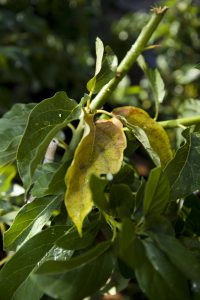- Fungal disease represents one of the greatest threats to tree industries and forests in the United States. They’re carried by invasive wood borers from overseas.
- A pre-invasion risk assessment tested 111 fungi samples extracted from 55 Eurasian beetles.
- None of the greenhouse-grown oak or pine saplings inoculated with the fungi died during the study period, and only a few fungi were shown to be weak pathogens.
- This study is believed to be the largest pre-invasion risk assessment of exotic tree pathogens ever conducted.
Scientists seek answers through research, but sometimes, a lack of findings can be good news. A recent University of Florida-led study involving tree diseases uncovered no remarkable threats to common Southeastern United States trees, and the lead researcher says to file it as a cautiously optimistic “win.”
Think of the 27-expert, nine-country survey team as tree epidemiologists, looking for the next “tree pandemic” that could decimate North American forests. Just one beetle could spread the next laurel wilt disease – a fungal infection carried by ambrosia beetles that’s currently troubling South Florida’s avocado industry – and as with human diseases, researchers know an ounce of prevention is worth a pound of cure.
RECENT NEWS ON LAUREL WILT: Decision-support tool using HiPerGator may help manage devastating avocado disease
It was a positive sign, then, that none of the greenhouse-grown oaks and pines in the study died or revealed other ill effects after being exposed to fungi from foreign wood-boring beetles, said Jiri Hulcr, lead researcher on the study and associate professor of forest entomology in the UF/IFAS School of Forest, Fisheries, and Geomatics Sciences. One of the greatest threats to tree industries and forests in the United States is fungal diseases carried by invasive wood borers from overseas.

“It’s certainly worthwhile,” Hulcr said of the pre-invasion risk assessment the team undertook. “If we had used the same method on laurels or elms years ago, we would have detected the laurel wilt and Dutch elm disease fungi ahead of time. This is one of the moments when a negative result is great news. A proactive exploration of dangers is more effective than a ‘sit and wait’ strategy.”
Aiming to identify which foreign beetle species posed risks if introduced to North American forests, the UF/IFAS Forest Entomology Lab connected with scientists worldwide to collect 55 species of Eurasian wood-boring beetles, from which they extracted 111 fungi samples. These fungi samples were brought to greenhouses managed by a collaborating agency on the study, the Florida Department of Agriculture and Consumer Services Division of Plant Industry (FDACS-DPI), in Gainesville.
There, the fungi were introduced, in a highly controlled environment, to 4-year-old saplings of species common to the Southeastern United States. At the conclusion of the 10-week study, all trees were still alive. Only some trees bore marks of infection, and Hulcr noted the fungi that caused these signs will be studied further.
“We did detect several beetle-associated fungi that are weak pathogens, but most exotic fungi appear to be harmless,” Hulcr said.
Nearly half of the land area in Florida – some 25,000 acres – is forested. Hulcr said it was important to look at Southeastern tree species in the pre-invasive risk assessment because this region’s dense forest cover can often aid in the spread of invasive species.
“Mostly, this study shows the effectiveness and value of risk assessments,” Hulcr said, explaining that the team believes this study to be the largest pre-invasion assessment of exotic tree pathogens conducted worldwide. “We only scratched the surface with the potential pathogens that exist out there; but we have shown that risk assessment for these diseases is not just possible, but effective.”
The research was supported by the United States Department of Agriculture’s Animal and Plant Health Inspection Service (USDA-APHIS), USDA Forest Service, FDACS-DPI, and the UF Emerging Pathogens Institute. It is published in the American Phytopathological Society’s online journal: https://apsjournals.apsnet.org/doi/pdf/10.1094/PHYTO-01-21-0041-R.
-30-
The mission of the University of Florida Institute of Food and Agricultural Sciences (UF/IFAS) is to develop knowledge relevant to agricultural, human and natural resources and to make that knowledge available to sustain and enhance the quality of human life. With more than a dozen research facilities, 67 county Extension offices, and award-winning students and faculty in the UF College of Agricultural and Life Sciences, UF/IFAS brings science-based solutions to the state’s agricultural and natural resources industries, and all Florida residents.
ifas.ufl.edu | @UF_IFAS
 0
0
